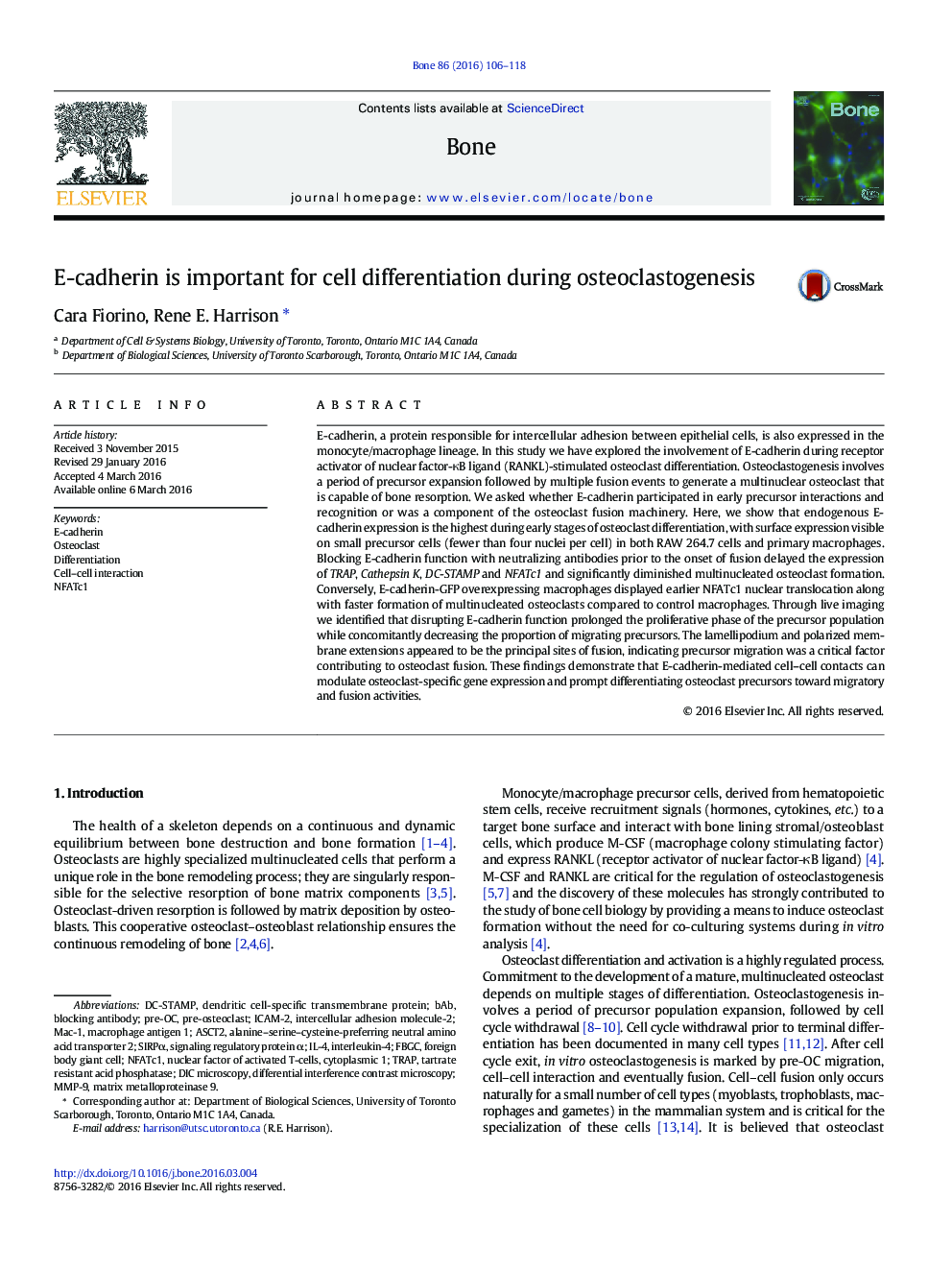| Article ID | Journal | Published Year | Pages | File Type |
|---|---|---|---|---|
| 5889072 | Bone | 2016 | 13 Pages |
Abstract
E-cadherin, a protein responsible for intercellular adhesion between epithelial cells, is also expressed in the monocyte/macrophage lineage. In this study we have explored the involvement of E-cadherin during receptor activator of nuclear factor-κB ligand (RANKL)-stimulated osteoclast differentiation. Osteoclastogenesis involves a period of precursor expansion followed by multiple fusion events to generate a multinuclear osteoclast that is capable of bone resorption. We asked whether E-cadherin participated in early precursor interactions and recognition or was a component of the osteoclast fusion machinery. Here, we show that endogenous E-cadherin expression is the highest during early stages of osteoclast differentiation, with surface expression visible on small precursor cells (fewer than four nuclei per cell) in both RAW 264.7 cells and primary macrophages. Blocking E-cadherin function with neutralizing antibodies prior to the onset of fusion delayed the expression of TRAP, Cathepsin K, DC-STAMP and NFATc1 and significantly diminished multinucleated osteoclast formation. Conversely, E-cadherin-GFP overexpressing macrophages displayed earlier NFATc1 nuclear translocation along with faster formation of multinucleated osteoclasts compared to control macrophages. Through live imaging we identified that disrupting E-cadherin function prolonged the proliferative phase of the precursor population while concomitantly decreasing the proportion of migrating precursors. The lamellipodium and polarized membrane extensions appeared to be the principal sites of fusion, indicating precursor migration was a critical factor contributing to osteoclast fusion. These findings demonstrate that E-cadherin-mediated cell-cell contacts can modulate osteoclast-specific gene expression and prompt differentiating osteoclast precursors toward migratory and fusion activities.
Keywords
SIRPαnuclear factor of activated T-cells, cytoplasmic 1ICAM-2FBGCDIC microscopyASCT2DC-STAMPNFATc1TRAPMMP-9IL-4E-cadherinOsteoclastTartrate resistant acid phosphataseinterleukin-4Cell–cell interactionDifferentiationForeign body giant cellBABMatrix metalloproteinase 9Blocking antibodyMac-1Differential interference contrast microscopydendritic cell-specific transmembrane protein
Related Topics
Life Sciences
Biochemistry, Genetics and Molecular Biology
Developmental Biology
Authors
Cara Fiorino, Rene E. Harrison,
